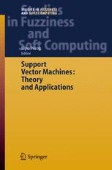Search
Search Results
-
On Statistical Independence in a Contingency Table
This paper gives a proof showing that statistical independence in a contingency table is a special type of linear independence, where the rank of a...
-
First-Order Logic Based Formalism for Temporal Data Mining*
In this article we define a formalism for a methodology that has as purpose the discovery of knowledge, represented in the form of general Horn...
-
A Probabilistic Logic-based Framework for Characterizing Knowledge Discovery in Databases
In order to further improve the KDD process in terms of both the degree of automation achieved and types of knowledge discovered, we argue that a...
-
Cluster Identification Using Maximum Configuration Entropy
Clustering is an important task in data mining and machine learning. In this paper, a normalized graph sampling algorithm for clustering that...
-
Identification of Critical Values in Latent Semantic Indexing
In this chapter we analyze the values used by Latent Semantic Indexing (LSI) for information retrieval. By manipulating the values in the Singular...
-
An Algorithm to Calculate the Expected Value of an Ongoing User Session
The fiercely competitive web-based electronic commerce environment has made necessary the application of intelligent methods to gather and analyze...
-
Justification and Hypothesis Selection in Data Mining
Data mining is an instance of the inductive methodology. Many philosophical considerations for induction can also be carried out for data mining. In...
-
Direct Products of Fuzzy Subgroups and Fuzzy Cyclic Subgroups
In Chapter 6, a necessary and sufficient condition for a fuzzy subgroup to be a weak direct sum of fuzzy subgroups was obtained by employing known...
-
Synchronization in Complex Networks
The study of complex systems pervades all of science, from cell biology to ecology, from computer science to meteorology. A paradigm of a complex...
-
Data Traffic, Topology and Congestion
We consider the interaction between the topology of a network and the tra.c carried along its channels. The binding elements between the topology and...
-
Cancer Diagnosis and Protein Secondary Structure Prediction Using Support Vector Machines
In this chapter, we use support vector machines (SVMs) to deal with two bioinformatics problems, i.e., cancer diagnosis based on gene expression data...
-
Application of Support Vector Machines in Inverse Problems in Ocean Color Remote Sensing
Neural networks are widely used as transfer functions in inverse problems in remote sensing. However, this method still suffers from some problems...
-
Gas Sensing Using Support Vector Machines
In this chapter we deal with the use of Support Vector Machines in gas sensing. After a brief introduction to the inner workings of multisensor...
-
Improving the Performance of the Support Vector Machine: Two Geometrical Scaling Methods
In this chapter, we discuss two possible ways of improving the performance of the SVM, using geometric methods. The first adapts the kernel by...
-
Linkage Learning Genetic Algorithm
In order to handle linkage evolution and to tackle the ordering problem, Harik [47] took Holland’s call [53] for the evolution of tight linkage quite...
-
Introduction
Genetic algorithms (GAs) are powerful search techniques based on principles of evolution. They are now widely applied to solve problems in many...
-
Preliminaries: Assumptions and the Test Problem
After introducing the background and motivation of the linkage learning genetic algorithm, we will start to improve and understand the linkage...
-
INTRODUCTION
Over the last decade, a series of publications has brought and established new research areas related to music, and intensified the research verging...
-
PERCEPTUAL BASES OF HEARING AND MUSIC PERCEPTION
The human auditory system pertains to the entire peripheral auditory mechanism. Classically, the peripheral auditory system has been divided into...
-
INTELLIGENT MUSICAL INSTRUMENT SOUND CLASSIFICATION
This chapter is devoted to intelligent classification of the sound of musical instruments. Although it is possible, and in some applications...
